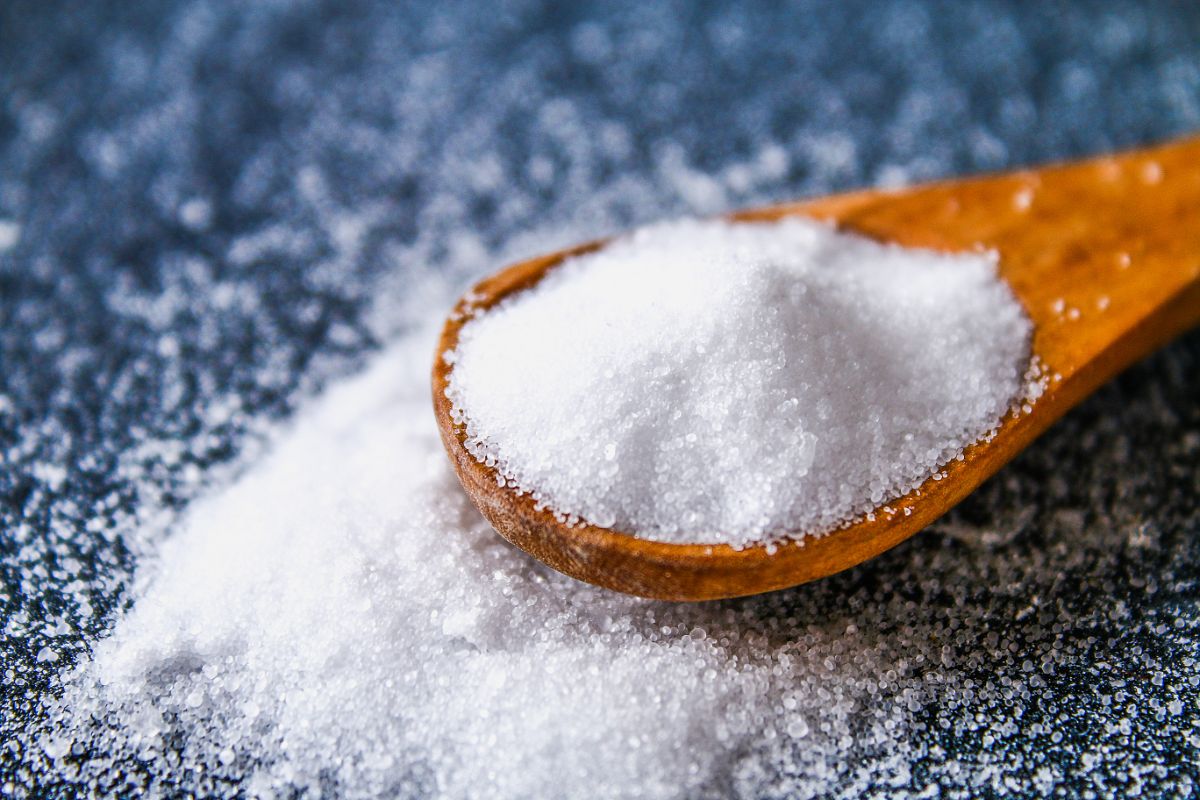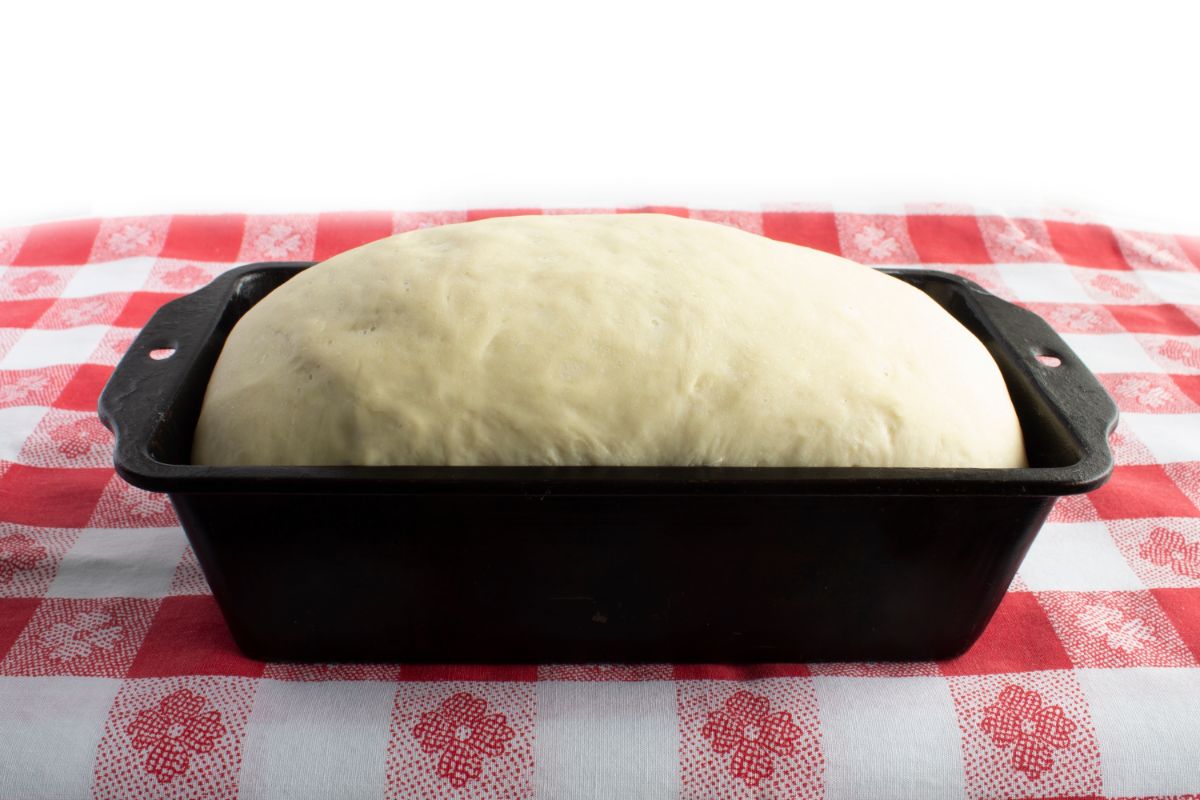So, does salt help the bread to rise? Salt will not help the bread dough to rise because it is an inhibitor to the yeast in the bread. Salt will slow down the fermentation and the activity of the enzymes in the dough.

The salt gives gluten in the dough time to strengthen resulting in a better loaf.
What makes bread rise?
Bread rises due to the presence of yeast. Because it’s a living organism, it grows and produces carbon dioxide creating an airy structure. Yeast is also sensitive to temperatures above 78 degrees.
To ensure you create a temperature within this range, you should add your baking flour to water that is 115 degrees. Another factor that makes yeast to rise is time. The longer you allow it to work, the more gas it produces.
If you’re preparing the dough in a cooler kitchen, this might take a while. With this in mind, you should add the right quantity of yeast. And finally, yeast will expand when you increase the amount of water. If the dough is stiff, it’s not easy to expand the gases to lift it. A general rule of thumb is to make the dough soft and nearly sticky.
Other natural ingredients can assist the bread to rise:
- Adding ginger to the dough makes yeast more active. Be sure to add no more than a quarter tsp. of powdered ginger.
- Alternatively, you can add fresh potato water.
- Dozens of studies suggest that gluten can make bread rise higher. Wheat has natural gluten which holds the flour together buy you can always add more. If your recipe has 8 cups of flour you should add a cup of gluten.
- Another common ingredient is dry milk powder. Don’t add more than two tbsp. of dry milk per bread. Apart from making the bread rise, it holds moisture for longer so it won’t get stale quickly.
Role of salt in bread making
The main role of salt is dough conditioning, adding flavor, and fermentation.
Dough conditioning
When salt is added to the dough, it strengthens its texture. The additional firmness allows water and gas to hold together without tearing. This is especially important when mixing the dough in soft water.
If the dough is too sticky, adding more flour may not do you any good. Just add some salt and it will come together well. This results in a fine-grained loaf of superior texture. When salt is left out, the work-up is difficult and the volume is poor. It’s worth noting that salt has no bleaching effect.
Fermentation
Salt assists in the fermentation process and prevents the destruction of sugar. Secondly, it prevents undesirable effects of excess acidity which may hinder healthy fermentation. Thirdly, it stops the bacteria that may compromise the process.
In its natural form, salt is hygroscopic which means it attracts moisture. When yeast in the dough releases water, it slows the fermentation process. In the absence of salt, yeast will ferment too quickly.
For optimal results, salt should stay within the range of 1.8-2%. As you bake bread from scratch, you can add anywhere from one tsp. to one tbsp. of salt. The amount will depend on your recipe. In dry climates, salt holds the water in the bread thus extending the self-life.
Adds flavor and color
Salt intensifies the flavor of the bread. If you bake without it, the bread will have a flat taste. The correct amount is 1-2 pounds in every 100 pounds of flour. When you add too much the bread will become unpalatable.
Keep in mind that the role of salt is to enhance flavor so it should not be used as a substitute for fine flavor. Wheat flour has carotenoid, which is responsible for the wheat aroma and creamy color.
Salt preserves the carotenoids and that’s why you must add it at the beginning of the mix. You may want to avoid adding salt at the later stages.
Why your bread is not rising

There’s nothing more satisfying than hearty, delicious bread. Sometimes, the kneading can be such a letdown. If your bread is not rising, the yeast could be lacking the right conditions.
To avoid future bread flops, you should avoid putting too much salt. While most bread recipes call for a bit of salt, you should never place it on top of the dough. When you put too much, it will compromise all the food the yeast needs to grow. In the absence of salt, the yeast consumes the available sugars making the crust look pale and dull.
Your bread can fail to rise when the water is too cold or too hot. The dough requires warm, humid temperatures to rise. If your kitchen is too cold, the yeast could die. So during winter, you should prepare your dough near the heating vent or fireplace.
If your bread can’t rise after meeting all these conditions, check the yeast. Old yeast won’t give a good rise. There lot of questions out there about reducing or omitting salt in the recipe. Salt brings out the nuances of flour and gives a balanced taste.
How long should the bread take to rise?
The easiest way to tell your dough has raised enough is how it looks and feels. When you touch it, it should leave an indentation. If the dough is not ready, it will slowly spring back. Make sure it rises until it feels light and fluffy.
In extreme cases, the dough should double in volume. If you’re making it in a warm kitchen, the bread will rise in 45 minutes. It’s important that you allow the bread to rise slowly as fast rises tend to have an acidic flavor.
What type of salt should I use for bread making?
While all salt crystals have the same chemical composition, they differ in terms of use. The most suitable salt for baking is table salt. It has evenly shaped crystals and additives like calcium silicate.
Many bakers use Kosher Salt because it dissolves faster than table salt. It’s denser and only a small amount is used. On the other hand, sea salt has a unique blend of elements and flavor. It has a coarse grain that would be evenly distributed in your baking recipe.
So, which salt is best for baking? You can use any salt that makes you feel fine. Try to gravitate towards mineral-rich salts.
Salt imparts flavor, contributes to superior texture, and makes the bread rise. While bread with added milk, butter, eggs, and sugar may not taste bad, adding salt will enhance flavor. Salt also improves shelf life and facilitates crust color.
